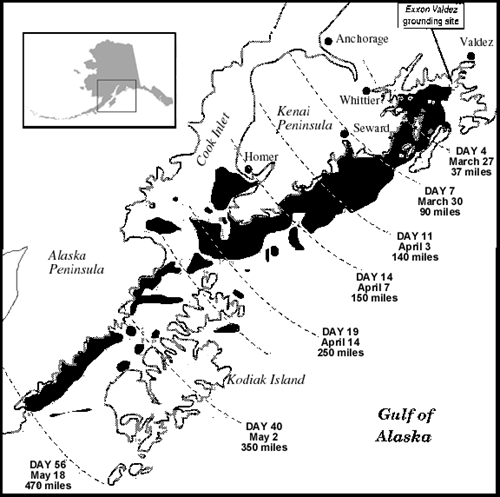Discovery of the significant impact of long-term effects of the 1989 Exxon Valdez oil spill (EVOS) is one of the most important and unanticipated findings from the EVOS Trustee Council’s research and monitoring program. Spilled oil lingered in subsurface patches along some of the shorelines until the present, and some of it retained its initial toxicity. Oil lingering in the environment slowed the recovery of some wildlife populations for up to 24 years. Studies funded by the Council documented as previously unknown consequence of the Spill: that long-term injury may equal or exceed acute injury at the time of the Spill.
The oil was not expected to linger. Following the Spill of approximately 11 million gallons of crude oil from the Exxon Valdez on March 24, 1989, cleanup efforts conducted from 1989-1991 and natural processes were anticipated to remove the oil. At the time of the Spill, storms, wind and currents distributed the oil over 1300 miles of shoreline, from the site of the ship’s grounding in Prince William Sound to the Gulf of Alaska (Fig. 1).

Scientists studying the fate of the oil estimated 20% evaporated, 50% biodegraded, 14% was cleaned up, 13% remained in subtidal sediments, 2% remained on shorelines, and less than 1% remained in the water (Wolfe et al., 1994). Ten years after the Spill, most of the beaches appeared clean on the surface, although occasional tar balls or hardened oil residues could be encountered, which remains true today. Some subsurface oil had been reported in a few places (Hayes and Michel, 1999), but it was expected to decrease over time and most importantly, to have lost its toxicity due to weathering. This was not always the case, and a series of surveys funded by the Council continued to locate, further identify, and increase understanding of the persistence and toxicity of the lingering oil (Short et al., 2004, 2006, 2007; Irvine et al. 2006, 2014; Nixon et al. 2013; Li and Boufadel, 2010).
